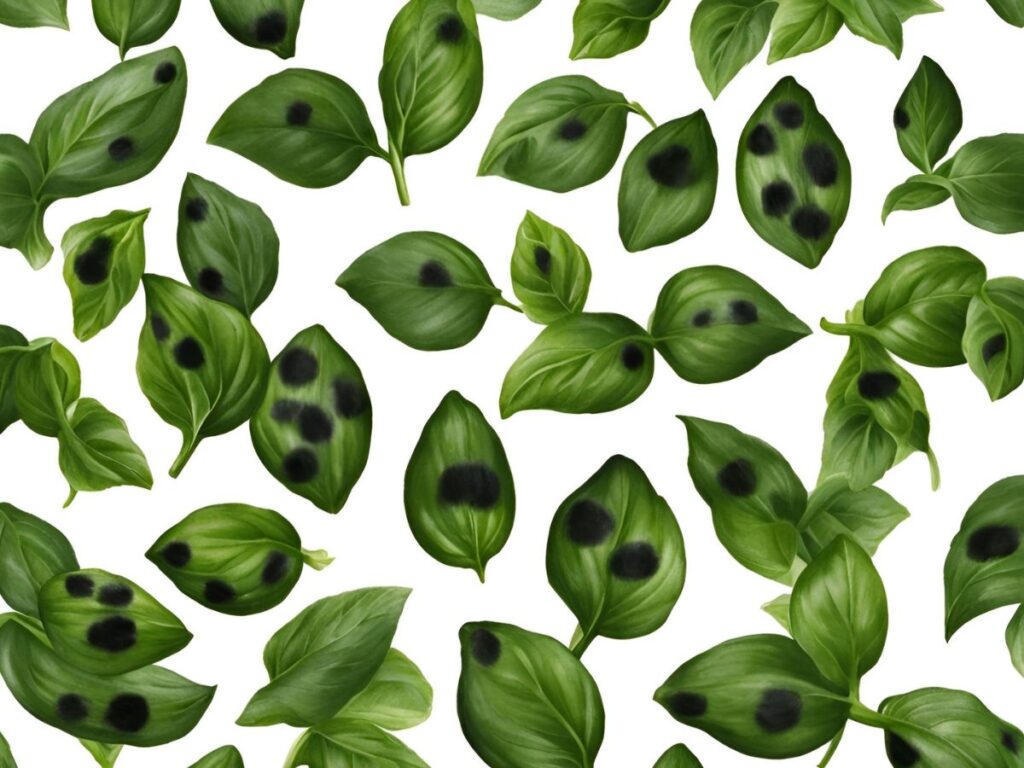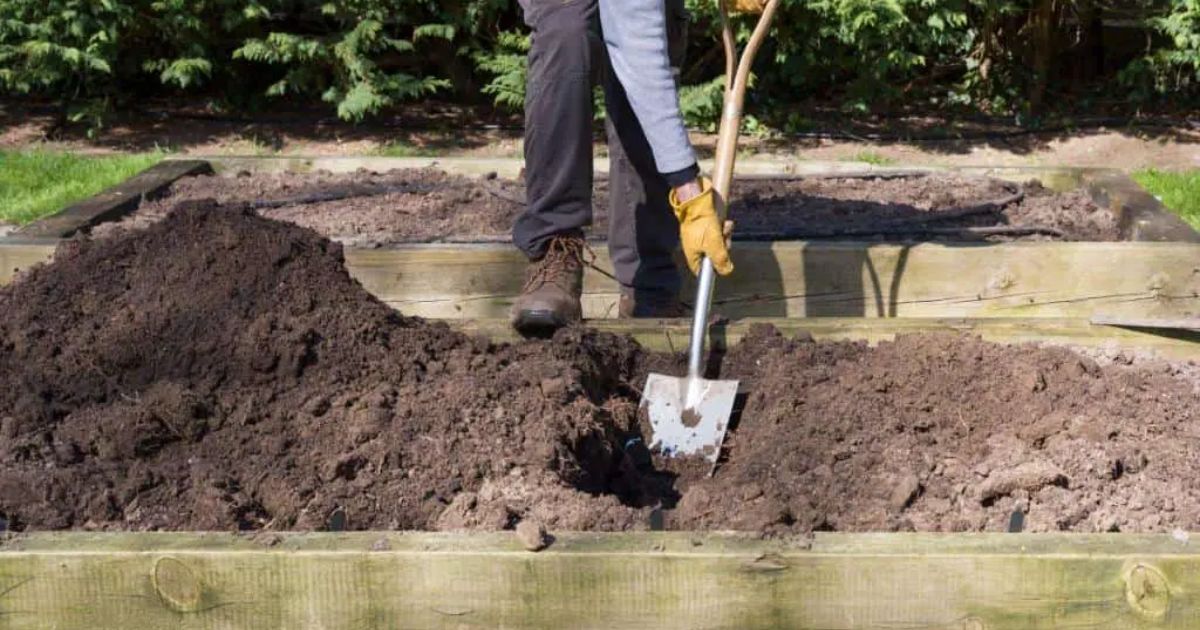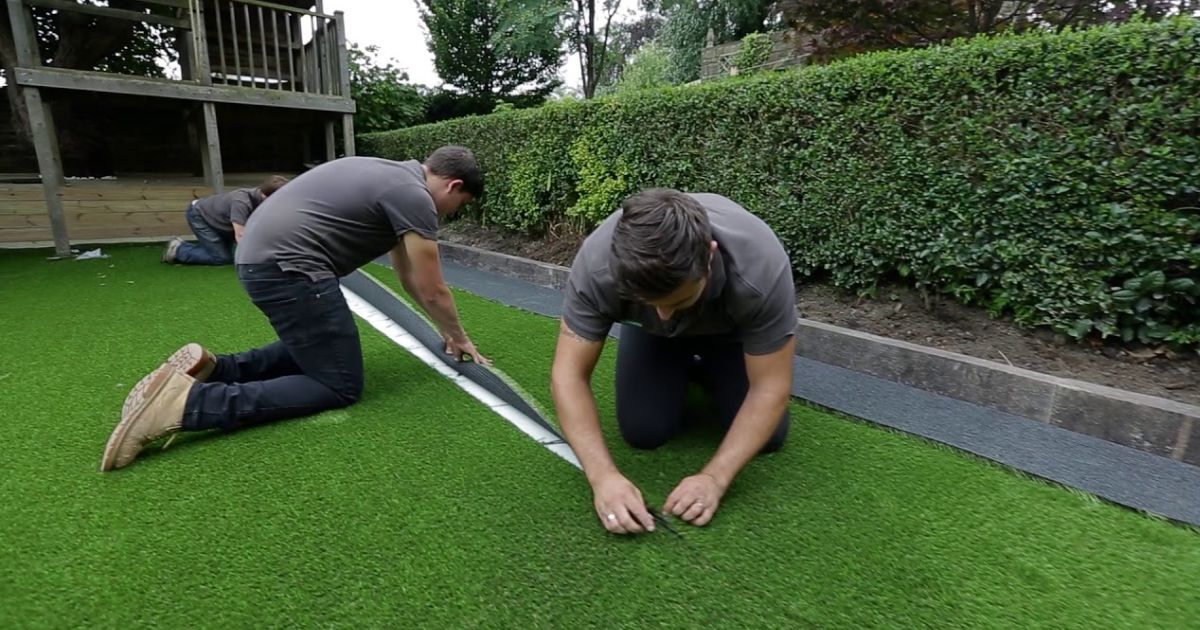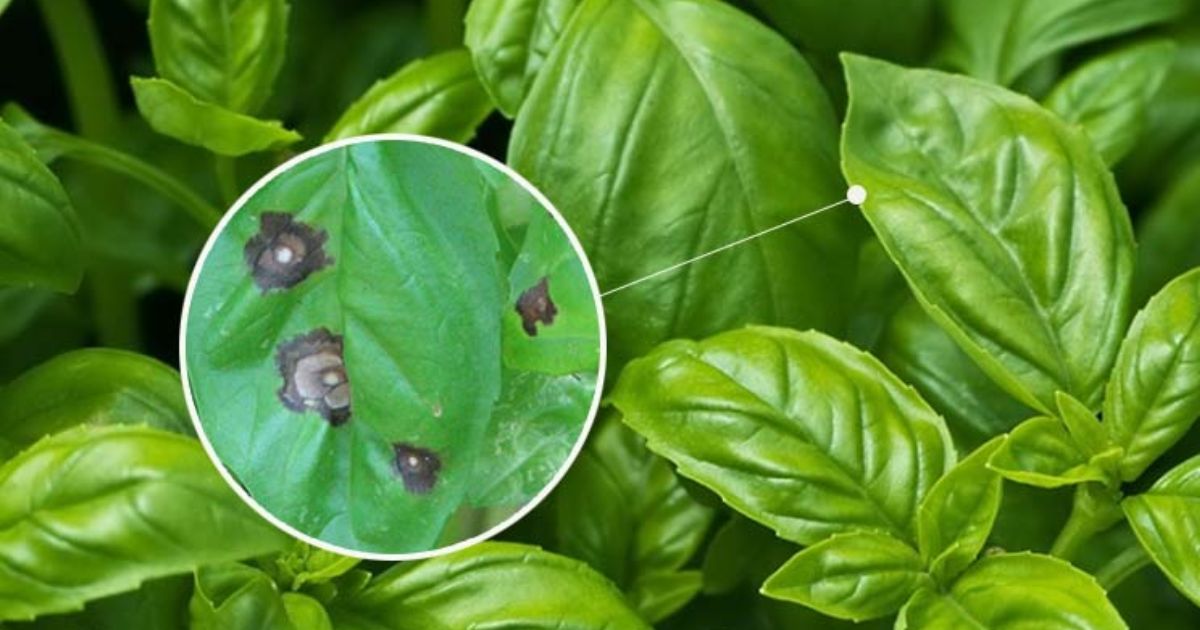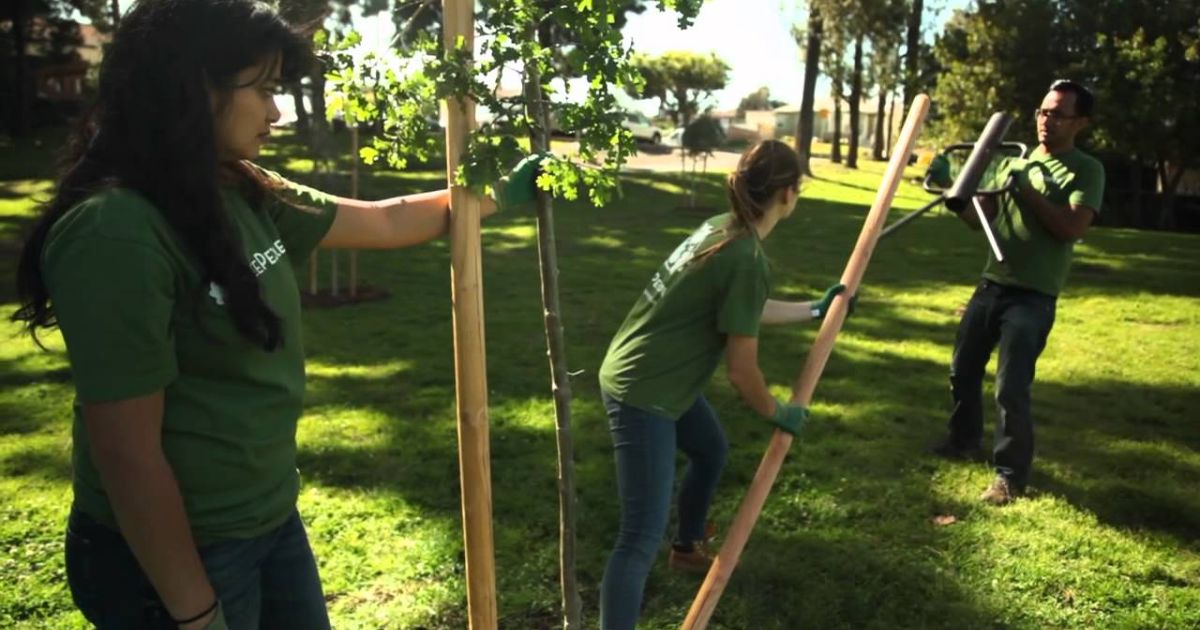Basil is a popular aromatic herb widely used in cooking, but it’s not immune to certain plant diseases. One common issue that basil gardeners face is the appearance of black spots on the leaves. These dark, unsightly patches affect the plant’s appearance and can harm its overall health and productivity. So, what exactly are basil black spots, and how can you eliminate them?
Basil black spots are typically a sign of fungal or bacterial infections, though they can also result from environmental stress or nutrient deficiencies. Untreated, these spots can spread, causing the plant’s leaves to yellow, curl, or even die. In this article, we’ll explore the causes behind basil black spots, offer practical solutions to treat and prevent them and share expert tips on keeping your basil plants healthy and thriving.
What Are Basil Black Spots?
Definition and Appearance
Basil black spots are dark, discoloured patches that appear on the leaves of basil plants, often signalling a problem with the plant’s health. These spots can vary, ranging from specks to larger, irregular blotches. They are typically dark in colour, appearing black, brown, or even purple, and can sometimes have a yellowish or brown halo around the edges. The spots usually start small but can grow and merge if left untreated, leading to more extensive damage to the leaves. You’ll often find these spots concentrated on the lower or older leaves first, though they can appear anywhere on the plant as the infection spreads.
Common Symptoms
In addition to the black spots, you may notice several other symptoms when your basil black dots plant is infected. One of the most common signs is the yellowing of the tissue surrounding the black spots. This occurs as the disease disrupts the plant’s ability to transport nutrients, weakening the leaf structure. Over time, the infected leaves may begin to curl or wilt, further affecting the plant’s overall health. If left untreated, the black spots can cause the leaves to drop prematurely, reducing the plant’s ability to photosynthesize and ultimately stunting its growth. how to prevent bananas from splitting
Causes of Basil Black Spots
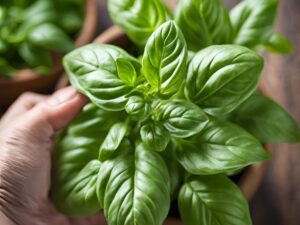
Fungal Infections
One of the most common causes of basil black spots on leaves is fungal infections. Two of the most prevalent fungi that affect basil are Alternaria and Pythium. Alternaria fungi cause dark, irregular spots on the leaves, often surrounded by yellowing. This infection typically starts at the bottom of the plant and works its way upward. On the other hand, Pythium is a water mould that thrives in excessively damp conditions, leading to root rot and, eventually, black spots on tiny black spots on basil leaves. Both fungal infections can quickly spread if not controlled, often thriving in environments with high humidity levels and poor air circulation.
Bacterial Diseases
Bacterial infections are another major culprit behind basil black spots. One of the most common bacterial pathogens is Xanthomonas, which causes bacterial leaf spots. This bacterium leads to small, dark lesions on the leaves, often accompanied by a yellowish halo. As the infection progresses, the spots can expand and merge, causing significant damage to the basil plant. Bacterial diseases tend to spread rapidly, mainly when leaves are wet, and they can be challenging to control once established. Proper care and sanitation practices are essential to prevent the spread of these diseases.
Environmental Stress
Environmental factors can also significantly contribute to the development of black spots on basil leaves. Poor air circulation, high humidity, and excessive moisture are conducive to fungal and bacterial growth. Basil plants grown too closely together or in poorly ventilated areas are more prone to developing these issues. High humidity, especially in areas where basil plants are grown indoors or in greenhouses, creates a damp environment that encourages fungal infections. Excessive moisture from rain or improper watering practices can exacerbate the problem, leading to waterlogged soil and stressed plants.
Nutrient Deficiencies
Basil plants that lack essential nutrients are more susceptible to diseases, including black spots. Deficiencies in nutrients like potassium or magnesium can weaken the plant’s immune system, making it harder for the basil to resist fungal and bacterial infections. For instance, potassium is critical for the plant’s overall stress resistance and ability to repair cell damage. When basil lacks potassium, it may exhibit yellowing and spots on its leaves, making it more prone to fungal infections. Magnesium, vital for photosynthesis, helps maintain the plant’s healthy growth and robust leaf structure, so a deficiency can also make basil more vulnerable to diseases like black spots.
Improper Watering
Watering habits play a crucial role in black spots on basil plant health. Overwatering or underwatering can contribute to developing black spots on basil leaves. Overwatering creates soggy soil, leading to root rot and a higher likelihood of fungal infections. In contrast, underwatering stresses the plant, causing it to become weak and more susceptible to diseases. Both extremes can lead to dehydration or excessive moisture around the plant’s roots and leaves, making the basil plant more vulnerable to black spots and other issues. To maintain healthy basil, it’s essential to water the plant properly, ensuring the soil is well-draining and that it doesn’t stay too dry or too wet for extended periods.
How to Prevent Basil Black Spots
Proper Spacing and Air Circulation
One of the most effective ways to prevent basil black spots is to ensure that your plants have adequate space for proper air circulation. Basil plants thrive when they have enough room to grow, as crowded conditions create an environment where moisture lingers around the leaves, promoting fungal growth. Spacing your basil plants at least 6 to 12 inches apart allows air to flow freely around the plant, reducing humidity levels and helping the foliage dry quickly after watering or rain. Good air circulation is key to preventing the damp conditions that fungi like Alternaria or Pythium need to flourish.
Watering Tips
Proper watering is crucial in preventing black spots on basil plant leaves. Instead of watering the leaves, focus on watering the soil at the base of the plant. This method reduces excess moisture on the foliage, a primary cause of fungal infections. Avoid watering basil in the evening or at night when the temperature is cooler and the humidity is higher, giving moisture more time to sit on the leaves. Always ensure the soil is well-draining to prevent preventing water from building up around the roots, which may cause root rot and further spread fungal diseases. Once or twice a week, a thorough, deep watering is usually sufficient, depending on your climate and soil type. strawberry breeds
Sunlight and Temperature
Basil plants thrive in warm conditions with plenty of sunlight. Try to get six to eight hours of direct sunlight each day to minimize stress and prevent fungal infections. Sunlight helps dry out the leaf moisture and provides the necessary energy for the plant to grow strong and healthy. Temperature plays a crucial role as well—basil prefers temperatures ranging from 21°C to 29°C (70°F to 85°F). When basil is grown in temperatures that are too low or too high, it becomes more susceptible to stress, weakening its defences against diseases like black spots. Keeping basil in an optimal temperature range and ensuring it gets enough sunlight will reduce the likelihood of disease development.
Healthy Soil and Fertilization
To keep your basil healthy and strong, using well-draining soil and providing regular fertilization is essential. Basil thrives in loose, fertile soil that allows for good drainage. Soil retaining too much moisture can cause root rot and provide the ideal conditions for spreading fungal spores. Incorporating organic matter like compost can improve soil structure and provide basil with essential nutrients. Additionally, fertilizing basil with a balanced fertilizer ensures it receives the right mix of nutrients. Potassium, magnesium, and nitrogen are crucial for black spots in basil leaves growth, as deficiencies in these nutrients can erode the plant’s strength and make it more vulnerable to illnesses like black spots.
Pruning and Removal of Infected Leaves
Regular pruning is essential in black dots on basil leaves care, especially when dealing with black spots. If you notice any leaves with black spots or other signs of disease, it’s necessary should eliminate them right away in order to stop the spread of the infection. Pruning infected leaves helps keep the plant healthy and improves air circulation, allowing the remaining healthy leaves to thrive. Always use clean, sharp scissors or pruning shears to avoid introducing additional pathogens to the plant. Removing dead or damaged leaves also encourages new growth, keeping your basil plant looking fresh and productive.
Use of Mulch
Applying mulch around the base of basil plants can also help prevent black spots by reducing soil splashing during watering or rainfall. When water splashes from the soil onto the leaves, it can carry fungal spores and bacteria, leading to infection. Mulch, such as straw, wood chips, or grass clippings, acts as a protective barrier between the soil and the plant’s leaves. It helps retain soil moisture while preventing direct contact between the soil and the foliage. Just be sure not to pile the mulch directly against the plant’s stem, which can lead to other issues like stem rot.
By following these preventive measures—providing proper spacing, watering carefully, ensuring optimal growing conditions, maintaining healthy soil, pruning infected leaves, and using mulch—you can significantly reduce the risk of dark spots on basil leaves black spots and maintain the health and prosperity of your plants during the growing season.
Treatment Options for Basil Black Spots
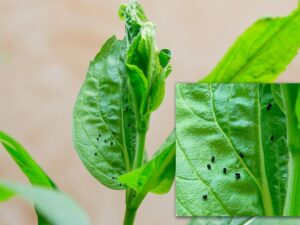
Organic Fungicides
Organic fungicides can be a practical choice for gardeners seeking natural solutions to control basil black spots. One of the most widely recommended organic fungicides is neem oil. A natural fungicide and insecticide is neem oil, effectively controlling fungal diseases like black spots without harming beneficial insects. Neem oil should be diluted with water in accordance with the directions on the product label and spray it on both the tops and bottoms of the basil leaves. Another helpful option is copper-based fungicides, which create a protective barrier on the plant that helps prevent the spread of fungal spores. Both neem oil and copper-based fungicides are safe to use on basil dark spots on leaves and are ideal for organic gardening practices.
Homemade Remedies
If you prefer DIY treatments, several simple, homemade remedies can help combat basil black spots. One popular option is a baking soda solution. Combine One gallon of water with one spoonful of baking soda to make this remedy and spray it on the affected leaves. Baking soda raises the pH on the plant’s surface, making it less hospitable for fungi. Another effective homemade remedy is garlic spray. Garlic has natural antifungal properties, making it an excellent option to deter fungal infections. Crush a few garlic cloves and immerse them in water for a day to make garlic spray then strain the mixture and spray it on the leaves. These all-natural remedies are simple to use and safe make, providing an eco-friendly option to treat basil black spots.
Chemical Fungicides
In more severe cases where the fungal infection has spread significantly, chemical fungicides may be necessary to restore the health of the basil plant. Products containing chlorothalonil, mancozeb, or thiophanate-methyl effectively treat black spots caused by fungal infections. When using chemical fungicides, following the manufacturer’s instructions is crucial. Typically, you must apply the fungicide every 7 to 10 days until the problem is under control. Be sure to avoid overapplication, as excessive use of chemical fungicides can lead to resistance in fungal populations. Additionally, fungicides should always be applied late at night or early in the morning to avoid damaging pollinators like bees. How Far Apart to Plant Strawberry Plants for Optimal Growth
Remove Infected Leaves
One of the most critical steps in treating black spots on basil plant is regularly removing and discarding infected leaves. If left on the plant, infected leaves can spread the disease to healthy areas, worsening the problem. Pruning not only helps limit the spread of the infection but also improves airflow around the plant, making it less conducive to fungal growth. Use sharp, clean pruning shears at all times to avoid introducing additional pathogens, and avoid composting infected leaves, as this can transfer spores back into the garden. Instead, discard them in a trash bag to safely remove the disease from the area.
Increase Airflow and Improve Soil Drainage
After treating basil black spots, it’s essential to implement long-term preventative measures to reduce the likelihood of future infections. Proper drainage is critical, as waterlogged soil encourages fungal growth as well as root rot. By incorporating organic matter, you can enhance soil drainage like compost or using raised beds to help water flow away from the roots. Additionally, increasing airflow around your basil plants by spacing them appropriately and pruning excess foliage helps maintain a dry environment less conducive to fungal infections. Both of these steps and proper watering methods that can lessen the chance of black patches recurring on your basil plants.
By using these treatment options—organic fungicides, homemade remedies, chemical fungicides (for severe cases), removing infected leaves, and improving airflow and drainage—you can successfully control and prevent basil black spots, ensuring that your basil plants stay healthy and productive throughout the growing season.
Conclusion
In summary, basil black spots can be frustrating for gardeners, but they can be effectively managed with the proper knowledge and care. Fungal infections, bacterial diseases, environmental stress, nutrient deficiencies, or improper watering often cause these unsightly spots. To prevent black spots, it’s essential to ensure proper spacing for air circulation, water the soil (not the leaves), provide optimal sunlight and temperature conditions, use well-draining soil, and regularly prune infected leaves. Treatment options include organic fungicides like neem oil, homemade remedies such as baking soda or garlic spray, and chemical fungicides for severe cases. Don’t forget to remove infected leaves and improve airflow and drainage to minimize future outbreaks.
As a call to action, gardeners should take preventive measures early on and address black spots promptly when they appear. Regularly inspect your basil plants for signs of disease and act quickly to prevent the infection from spreading.
A final tip is to practice good garden hygiene—clean your tools, discard infected plant material properly, and maintain healthy growing conditions. Doing so can keep your basil thriving and free from black spots, ensuring a bountiful and healthy harvest all season long.
FAQs
1. What are basil black spots?
Basil black spots are dark, discoloured patches that appear on basil leaves. They can be black, brown, or purple and often cause surrounding leaves to turn yellow, curl, or wilt. Fungal infections, bacterial diseases, or environmental stressors typically cause these spots.
2. What causes black spots on basil leaves?
The most common causes of black spots on basil leaves include fungal infections (such as Alternaria and Pythium), bacterial diseases (like Xanthomonas), environmental stress (poor air circulation, high humidity), nutrient deficiencies (such as lack of potassium or magnesium), and improper watering (over or underwatering).
3. How can I prevent basil black spots?
To prevent black spots, ensure proper spacing for good air circulation, avoid watering the leaves, and water the soil directly. Grow basil in well-draining soil, provide sufficient sunlight and adequate temperature, and regularly prune infected leaves. Mulching can also help reduce soil splash and fungal spread.
4. Are there natural remedies to treat basil black spots?
Natural remedies like neem oil and garlic spray can help treat black spots in basil. Neem oil is a natural fungicide that prevents fungal infections, while garlic spray is an antifungal deterrent. Additionally, a baking soda solution can be used to raise the pH of the leaves and prevent fungal growth.
5. Can chemical fungicides be used for basil black spots?
Chemical fungicides like chlorothalonil, mancozeb, and thiophanate-methyl can be effective for severe basil black spots. But it’s crucial to properly follow the manufacturer’s directions to avoid overuse and minimize the risk to beneficial insects.

